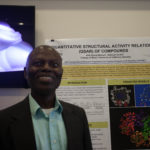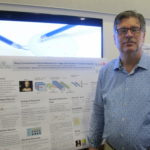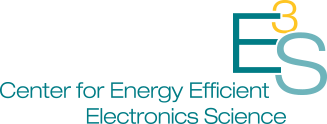2017 Application Area 1: Alternative Energy
Recent worldwide economic and social events have illuminated the need for energy independence and a reduction in fossil-fuel-based energy sources. This trend is reinforced by future energy requirements, which are predicted to triple within the next 35 years. Rapidly growing energy requirements, combined with the economic and ecologic problems associated with fossil energy sources, make the development of efficient, inexpensive and environmentally benign energy sources one of the biggest technological challenges of the 21st century. As we migrate to new energy sources—alternatives to fossil fuels—researchers have been addressing many technological challenges to make renewable technologies viable. Research in new energy technologies is extremely diverse, ranging from conceiving and validating new power generation concepts, identifying and engineering novel materials, improving efficiency, lowering costs, to integrating the new technologies into the power grid.
Researchers across UC Berkeley have been tackling energy challenges for decades and are continuing to do so. In the summer of 2016, community college faculty participating in the Research Experiences for Teachers (RET) program at UC Berkeley will have the opportunity to join some of these laboratories to undertake research projects that may have applications in the field of alternative.
Applicable disciplines: engineering, physics, chemistry, biology, mathematics, computer science
2017 Application Area 2: Wearable Electronics and Sensors
Wearable electronics and medical technologies have experienced a tremendous interest in recent years. The development of flexible and light-weight electronic systems, such as wearable medical devices, vitality sensors, and health monitors will likely transform medical care and personal diagnostics in unimagined ways. These new devices introduce tremendous versatility in terms of sensing locations in the body, which is currently limited to medical patients’ ear or finger. In addition to these clinical needs of monitoring vitals signs and symptoms with minimal impact for patients, the tremendous interest in wearable electronics is also driven by our increased desire for ‘around-the-clock personal-health monitoring’ using fitness and activity trackers such as Fitbit, Jawbone, and Misfit. Coupled with the advent of the Internet-of-Things, wearable electronics have thus become a hot commodity with an enormous market potential, making this an attractive topic for community college students.
Researchers at UC Berkeley are at the forefront of developing flexible and lightweight electronic systems, such as wearable medical devices and vitality sensors that will likely transform medical care and personal diagnostics in unimagined ways. In the summer of 2016, community college faculty participating in the Research Experiences for Teachers (RET) program at UC Berkeley will have the opportunity to join some of these laboratories to undertake research that aim at enabling wearable electronics.
Applicable disciplines: electrical engineering, physics, chemistry, materials science
2017 Application Area 3: Nanoelectronics
The continued miniaturization of electronic devices and components has been the driving force behind the tremendous growth of the semiconductor industry, which has dramatically transformed science, engineering and society as a whole. Since the famous observation by Gordon Moore in 1965 that transistors undergo continued size downscaling, we have experienced a 1000-fold decrease in device feature size. We have now entered the ‘nano-regime’ (the size range of 1-100 nm) in which entirely new families of materials and electronic components have become available, including nanotubes, quantum dots, nanowires, and two-dimensional materials (atomically thin sheets such as graphene). In contrast to conventional bulk semiconductor devices, the properties of these new nanoelectronic components are governed by quantum mechanics, with enormous potential for downscaling, faster speeds and more energy efficient operation.
Researchers across UC Berkeley are pioneers in nanoelectronic research and have greatly contributed to the development of new materials, devices, and circuit designs. In the summer of 2016, community college faculty participating in the Research Experiences for Teachers (RET) program at UC Berkeley will have the opportunity to work in the laboratories of some of these pioneers on nanoelectronic projects.
Applicable disciplines: engineering, physics, chemistry, materials science
2017 RET Program Participants and Research Projects
Photoluminescence of III-V NanoLED at Low Temperature
 Community College Faculty Researcher: Hui Sun Kim
Community College Faculty Researcher: Hui Sun Kim
Home Institution: Laney College, Oakland, CA
Teaching: Chemistry
Hosting Organization: Electrical Engineering and Computer Science (EECS), UC Berkeley
Faculty Advisor: Professor Ming Wu
Mentor:Seth Fortuna
Abstract of Research: Traditional light emitting diodes (LEDs) have limited use in optical communication devices because of their low modulation speed. Coupling an LED to an optical antenna greatly increases the modulation speed through the enhancement of spontaneous emission rate. A III-V electrically-injected antenna-coupled nanoLED has been shown to achieve ~200x spontaneous emission rate enhancement. To facilitate the measurement of quantum efficiencAy of this antenna-coupled nanoLED, a low-temperature photoluminescence study of a baseline nanoLED device without the antenna was carried out.
Quantitative Structural Activity Relations (QSAR) of Compounds
Community College Faculty Researcher: Kofi Opong-Mensah
Home Institution: College of Marin, Kentfield, CA
Teaching: Engineering
Hosting Organization: Chemistry, UC Berkeley
Faculty Advisor: Professor Kathleen Durkin
Abstract of Research Project: QSAR techniques are used to explore the relationships of computer technology, mathematical and computational models for analysis, modeling and predicting toxicological effects using chemical structures and various endpoints. Pattern recognition techniques and other principal component analysis are then used to further explore the mechanisms of toxicity. The present study is limited to modeling of Hemoglobin using Chimera. Other investigations with different classes of pharmaceutical compounds are ongoing. It is proposed that similar techniques may be explored to predict better molecules that may be used to obtain low voltages and other energy saving devices.
Deep Convolutional Neural Network for Image Classification – Function mapping
Community College Faculty Researcher: William Shwarz
Home Institution: Cañada College, Fremont, CA Teaching: Computer Science
Teaching: Computer Science
Hosting Organization: Electrical Engineering and Computer Sciences, UC Berkeley
Faculty Advisor: Professor Vladimir Stojanovic
Mentor: Ranko Sredojevic
Abstract of Research: 1.6 billion people world wide have no access to electricity. In Sub-Saharan Africa (SSA), fewer than 10% of rural households have electricity connections. Access to grid electricity in Sub-Saharan Africa remains low; a problem generally ascribed to differences in settlement patterns. Mean Interhouse Distance (MID) and Penetration Rates (PR) are factors in population settlements that affect the cost of energy pathways. This research looks into the optimization of MID and PR in energy pathways through Smart Microgrids.
